
When considering hacking and art, information and telecommunications and art, we can't neglect trolling, which is perhaps the practice that has most successfully been adapted and transmogrified into the mainstream. It's buzzy.
In its inception, trolling was a way to humble outsiders, a carryover from the pre–Web 2.0 era when there was a set of uncommon skills one had to possess to participate in the world wide web, lest they were on AOL and subject to ridicule and hacker scams, some of which I perpetuated as a tween. But as the gate to entry became lower and lower, more and more people participated on both sides of the game, both as trolls and as people/sheeple.
We must be careful when we have platforms.
In 2014 I released a music project entitled Alone We Play. The songs, made to emulate a browsing window with multiple tabs open, are typically one verse and deal with intersections of network culture and urban communities of black and Latino youth, the traditional purview of hip-hop and other genres. One song, "Don't Feed the Trolls," was inspired by white-hat troll and network administrator Gilbert Morgan — a black American — and to a lesser extent, Ghastly Gilbert Smith — an indigenous American with some more recent European ancestry. Both have popular Facebook presences, with content that switches between comedy, music, and social justice issues.
Both Morgan and Smith challenge the troll stereotype but my song did no such thing; instead I attempted to create a surface-level portrait of trolls as they navigate social networks, bombarded with genres of information from friends, romantic interests, co-workers, family, and others: “Sometimes yo, I get online just to go get a rise out of these l**es who clog my feed with sh*t I cannot buy now...”
In the same way that hacking now exists in a kind of expanded field that goes beyond network technologies and information systems (this neat lifehack has college students emptying out their menu drawers into the trash — adding an egg and chopped peanuts to their instant ramen!), so too has trolling appeared to go beyond its existence online.

"In another image, he writes under young singer-songwriter Sky Ferreira's portrait of herself in the passenger seat of a red sports car: 'Enjoyed the ride today. Let's do it again. Richard.' If she had a snide response to the leering comment, we never learn what it was. Like a true troll, Prince always gives himself the last word." (from "Richard Prince Sucks," by Paddy Johnson, October 21, 2014)
Épater la bourgeoisie, a rallying cry first championed by Charles Baudelaire and Arthur Rimbaud, became a foundational principle for the historical avant-garde leading up to and continuing past the first World War. Originally called the Great War (*snicker*). Given that trolling often takes place on networks in the Global North, or is initiated by people with more than the bare minimum of resources, is it possible that trolling can be seen as a contemporary extension of this desire to "shock the bourgeoisie"? Replacing hashish, absinthe, and opiates, with serotonin, psychopathy and life ruins?
But really, what is the value in seeing things not explicitly called trolling as trolling? Perhaps our increased awareness and acceptance of the hypermediation of our environment, a state of mind what I might use Heidegger's "dasein" or "being there" to describe, leads us to such a place where the definition can be stretched. Contemporary buzz-building tactics seem related to trolling as much as they are to agent provocateurs, shock jockeys, and other ways of getting on our last nerve.
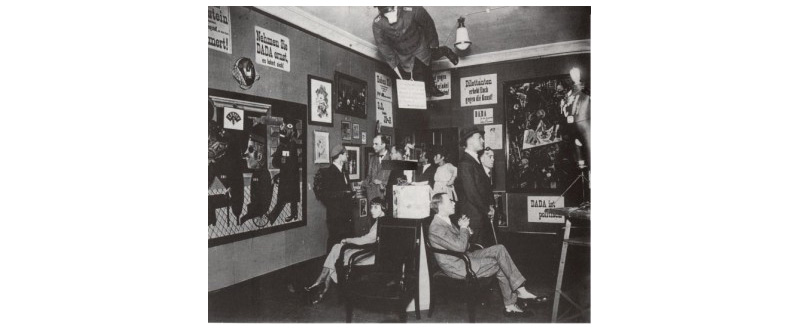
Dasein (roughly translated as being-there/there-being, or existence) is a being that understands itself in terms of possibilities. Heidegger created the concept of the In-der-Welt-sein as a way to talk about consciousness without using subject or object, and both dasein and in-der-Welt-sein work together. This dissolution of two often-separated positions, emphasizing the idea that there is no consciousness that floats free outside of a subject or object, seems strangely in continuity with the pre-telecommunication ideas found in some Animist faiths, as well as the Internet of Things, where the inanimate becomes "alive" by its ability to transmit from our real life into the consoles of other living persons.
Blogs, Flickr, social networking, and Web 2.0 has helped produce what I call the “there-being,” the person for whom mediation is not -unnatural and is in fact foundational, as many aspects of life become subjugated to the needs of their digital presence.
“[Kant] was also an eager reader of all sorts of travel reports, and he—who never left Königsberg—knew his way around in both London and Italy; he said he had no time to travel precisely because he wanted to know so much about so many countries.” Hannah Arendt, Lectures on Kant's Political Philosophy. (Chicago: University of Chicago, 1982. Print.)
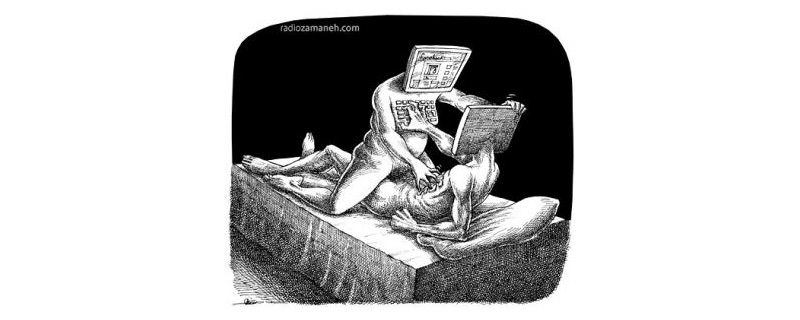
Radio Zamaneh. N.p., n.d. March 21, 2013.
In earlier eras, a faint glimmering of what would become the “there-being” existed in the dilettante, the bohemian, and in some cases, the scholar. In the modern era, home movies, home videos, slideshows, and photo albums were exciting forums and repositories for people on their life journeys, but the notion of broadcasting that material was largely unheard of, except for the lives of celebrities, and certain social milieus like CB or ham-radio enthusiasts, and even then the scope was much smaller. A contemporary way of being that has a more fluid relationship with media and broadcasting technologies, whether they are used to build a personal brand or not, may make one more likely to use terms and archetypes that exist online to describe phenomena away from the keyboard.
When you mislaid a certain something, keep your cool and don't get hot. Calculatus Eliminatus is the best friend that you've got. Calculatus Eliminatus always helps an awful lot. The way to find a missing something is to find out where it's not.
Let's look at trolling, and what it really is, in its purest form.
The wikipedia page on "bad faith" existentialism opens with the statement: "This article has multiple issues. Please help improve it or discuss these issues on the talk page." I feel a palpitation.
In the 1913 Webster’s Dictionary, bad faith was equated with being double-hearted, "of two hearts," or "a sustained form of deception which consists in entertaining or pretending to entertain one set of feelings, and acting as if influenced by another." In other words, ya playin' yaself. If the Internet was predicated on everyone co-existing on a level playing field, able to distribute and share knowledge without the previous gatekeepers of status or affiliation to slow things down (perhaps one of the main benefits of having user names rather than real names), trolling takes that utopian possibility and throws it by the wayside. Everybody wanna be a Socrates but nobody wanna be a Socrates.
Or: trolling is a destructive way of addressing the ambivalent state of being that is life online, that is, being connected to millions and even billions of people simultaneously, but being incredibly isolated, separated from the nuance of subtle body language, body odor, touch, taste, et cetera. But as Picasso once said: The impulse to destroy is also a creative one. Too bad he wasn't into destroying patriarchy or cultural imperialism.
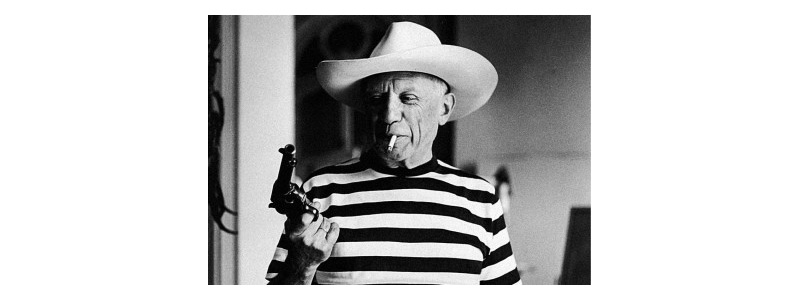
So what are the forms favored by trolling? What are some of the techniques?
1. Ad hominem attack. The ad hominem attack is the converse of an argument from authority which would go as follows
Drake is an authority on a particular topic
Drake says something about that topic
Drake is probably correct

In the ad hominem attack, one may point to the feet of clay of the authority being pointed to.
Thou, O king, sawest, and behold a great image. This great image,
whose brightness was excellent, stood before thee; and the form thereof was terrible.
This image's head was of fine gold, his breast and his arms of silver, his belly and his thighs of brass,
His legs of iron, his feet part of iron and part of clay. (Daniel 2:31-33)
And whereas thou sawest the feet and toes, part of potters' clay, and part of iron, the kingdom shall be divided;
but there shall be in it of the strength of the iron, forasmuch as thou sawest the iron mixed with miry clay.
And as the toes of the feet were part of iron, and part of clay, so the kingdom shall be partly strong, and partly broken.
And whereas thou sawest iron mixed with miry clay, they shall mingle themselves with the seed of men:
but they shall not cleave one to another, even as iron is not mixed with clay. (Daniel 2:41-43)
It was all a dream! I used to read.
Bill O'Reilly uses ad hominem attacks.
Sean Hannity too.
Shaky grounds ... shaky warrior.
In the above clip Jon Stewart bests Bill O’Reilly’s rhetorical punditry style with a converse methodology.
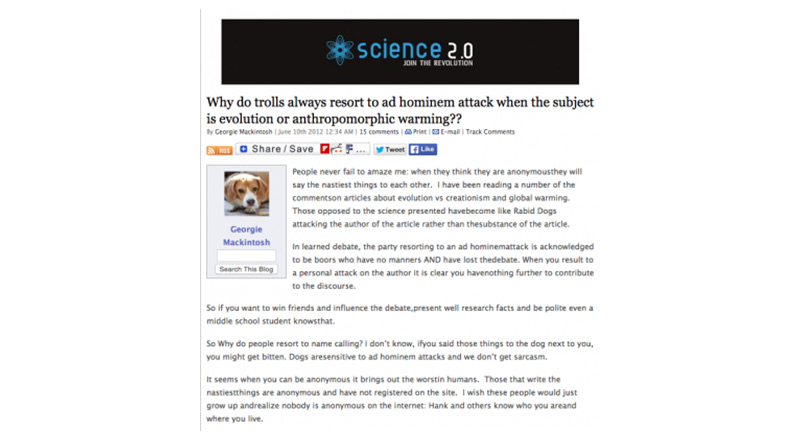
People never fail to amaze me: when they think they are anonymous they will say the nastiest things to each other. I have been reading a number of the commentson articles about evolution vs creationism and global warming. Those opposed to the science presented havebecome like Rabid Dogs attacking the author of the article rather than thesubstance of the article.
In learned debate, the party resorting to an ad hominemattack is acknowledged to be boors who have no manners AND have lost thedebate. When you result to a personal attack on the author it is clear you havenothing further to contribute to the discourse.
So if you want to win friends and influence the debate,present well researched facts and be polite even a middle school student knows that.
So Why do people resort to name calling? I don’t know, if you said those things to the dog next to you, you might get bitten. Dogs aresensitive to ad hominem attacks and we don’t get sarcasm. It seems when you can be anonymous it brings out the worstin humans. Those that write the nastiest things are anonymous and have not registered on the site. I wish these people would just grow up andrealize nobody is anonymous on the internet: Hank and others know who you areand where you live.
As an example I did was on a site half way across the world where someone emailed me that she was going to kill herself. The site was achat site where all were anonymous. It took less that ½ hour to get help to herdoor, she was in London on a London site and I was in Canada at the time. So just because you think it is anonymous youcan be found and held accountable for what you say. I am saddened that those trolls posting nasty comments thinkthat by personal attacks they will win an argument. I can’t help thinking the trolls are mostly American. I am sitting in Guangzhou writing this. Over here we know we are not anonymouson the web. And, No, They don’t eat dogs over here anymore. Having a pet dog isa symbol of wealth; like having a Porsche only cheaper.
So let’s all try to be respectful when posting. Some of usare smarter than others but brains do not give you the right to be nasty. Scienceis about evidence and proof or disproof of theory. Wishing something to be sowill not make it so. A Christian god didnot make the world in 6 days 6000 years ago. No matter how hard you wish andpray the facts will not change.

That is not true. What you mean to say is that a lot of papers are published in journals each year. There are 25,000 open access publications alone and most of them are not peer-review, they are 'examined' by an editor for technical merit and/ or 'post-publication peer review' which means if no one reads it and criticizes it, it passed peer review. There are probably 25,000 that are actually what most people consider peer reviewed per year, still quite a lot.
Hank Campbell | 06/10/12 | 10:03 AM
Link
Funny, but I saw the IDists making this same point about the antifanatics just the other day.
http://www.evolutionnews.org/2012/06/anti-id_philoso060381.html
What a coincidence.. NOT!
Who's Online?
Read more:
Science20.com
Other methods innovated by trolls include:
2. Doxxing. A troll will essentially hack or use cunning to extract personal information including where a target may live, who their spouse or children are, their telephone and email addresses, their workplace, how many nudes they have of themselves, etc and may distribute this sensitive information in another location particularly for public shaming. We distinguish this from blackmail, because in doxxing, there is nothing to be bargained for/no way out.
3. Swatting. Swatting is perhaps the most intense of trolling innovations, something like a happening, where one builds off of the information acquired that could result in a doxxing or life ruin, and instead files a false police report like a bomb threat or murder-hostage sitiuation, prompting police or swat teams to swarm and break into the home of the target. This will often take place while the person is online playing a video game. Quite the disruption ...

Pure vindictiveness of cybervigilantism characterizes trolling. It's all a spectrum of course but regardless, the facts remain. How did we get to this extreme state of affairs?
Before trolling was flaming, and before social media there was BBS, chat rooms, IRC, Arpanet, and more. The history of the Internet as open forum that can devolve into boys'-bathroom graffiti contest is long and rich.
Let’s look at flaming. In 1987 an internet user posted up the 12 rules of flaming:
1. Make things up about your opponent:
It's important to make your lies sound true. Preface your argument with the word "clearly." "Clearly, Brian Hillis is a racist, and a dirtball to boot."
2. Be an armchair psychologist:
You're a smart person. You've heard of Freud. You took a PSYCHOLOGY COURSE in college.
Clearly, you're qualified to psychoanalyze your opponent. "Peach Pshawski, by using the word 'zucchini' in her posting, shows she has a bad case of....."
3. Cross-post your flames:
Everyone on the net is just waiting for the next literary masterpiece to leave your terminal. From alt.mud.lp to alt.cuddle to rec.animals to news.admin, they're all holding their breaths until your next flame. Therefore, post everywhere.
4. Conspiracies abound:
If everyone's against you, the reason can't *possibly* be that you're a dick.
There's obviously a conspiracy against you, and you will be doing the entire net a favor by exposing it.
5. Lawsuit threats:
This is the reverse of Rule #4 (sort of like the Yin & Yang of flaming)
Threatening a lawsuit is always considered to be in good form. "By saying that I've posted to the wrong group, Didley has libelled me, slandered me, and sodomized me. See you in court, Didley."
6. Force them to document their claims:
Even if Ralph Gagliano states outright that he likes tomato sauce on his pasta,
you should demand documentation. If Newsweek hasn't written an article on Ralph's pasta preferences, then Ralph's obviously lying.
7. Use foreign phrases:
French is good, but Latin is the lingua franca of flaming. You should use the words "ad hominem" at least three times per article. Other favorite Latin phrases are "ad nauseum", "vini, vidi, vici", "fetuccini alfredo."
8. Tell 'em how smart you are:
Why use intelligent arguments to convince them you're smart when all you have to do is tell them? State that you're a member of Mensa or Mega or Dorks of America. Tell them the scores you received on every exam since high school. "I got an 800 on my SATs, LSATs, GREs, MCATs, and I can also spell the word 'premeiotic'".
9. Accuse your opponent of censorship:
It is your right as an American citizen to post whatever the hell you want to the net
(as guaranteed by the 37th Amendment, I think).{Author’s note: is flaming thereofore an American invention? Access + entitlement = seeds of flaming} Anyone who tries to limit your cross-posting or move a flame war to Netusers is either a communist, a fascist, or both.
10. Doubt their existence:
You've never actually seen your opponent, have you? And since you're the center of the universe, you should have seen them by now, shouldn't you? Therefore, THEY DON'T EXIST! This is the beauty of flamers' logic.
11. Lie, cheat, steal, leave the toilet seat up.
12. When in doubt, insult:
If you forget the other 11 rules, remember this one. At some point during your wonderful career as a flamer you will undoubtedly end up in a flame war with someone who is better than you. This person will expose your lies, tear apart your arguments, make you look generally like a bozo. At this point,there's only one thing to do: insult the dirtbag!!! "Oh yeah? Well, your mother does strange things with ..........."
The Golden Rule of Flaming:
My flames will be witty, insulting, interesting, funny, caustic, or sarcastic, but never, ever, will they be boring.
After Web 2.0 came along and more people gained access to the internet, flaming wasn’t enough. Hacking to shut down boards in their entirety became more prominent. When the life 0f the boards became less favorable than Facebook, Myspace, Friendster, and the like; when the personal website became the WordPress, the Blogspot, etc.; hacking seemed less practical as an expenditure, and destroying other people with the intended tools of the platform became much more desirable. Trolling found its fertile ground of experimentation in the 4chan platform, and flaming became a garnish to the fecal crostini of the troll.

We've been detaching one another for quite sometime now. It was my ex's birthday the other day. We had a pleasant exchange. They had the last word but I had the last emoji. I went to sleep happy that I didn't burst into tears over text messages. {Author’s update: I thought I had the last emoji}
As Jami Bartlett lays out in this article for Wired UK : “One early Arpanet computer scientist realised that the lack of facial cues when communicating via machines meant users were often taking things the wrong way.” In 1979, to avoid confusion, he recommended that any tongue-in-cheek comments be suffixed with this emoticon:
;-)
What I call the winky face.
While today such a thing seems absurdly naive, perhaps in those early days, with an intentional community, the emoticon that would later become as ubiquitous as colon close parenthesis probably did well.

So to recap: We’ve established that trolling exists in spaces where lateral communication is possible and where people are given the benefit of the doubt. Perhaps for this reason alone, trolling can’t really exist in space of hierarchical distributions of power like mass media, sports and entertainment. Prickdom yes, being bull-headed yes, satire, yes, but trolling? Nah bruh.
In sports Joakim Noah and Dennis Rodman use a set of techniques that are not quite trolling, but are strategic irritation when on the basketball court.
But on the streets, particularly visible in Chicago with its Wobblies, Bughouse Square, and long history of socially engaged murals … the space of the public, the street seems to be one where, if you work hard enough, or smart enough, you can stake your claim.

David Beltran and Brendan Carroll, as Bae Cutler and Joking Noah, created a shrine to NBA star Derrick Rose and his torn meniscus. The shrine, which takes heavily from shrines to people who have fallen as a result of gun violence, and hit and run car accidents, was put up at the I-90 underpass of the Kennedy Expressway at Fullerton — a place that, just 10 years prior, a very similar shrine to the Virgin of Guadalupe was produced by devotees after a water stain resembling the iconic figure was discovered.

Beltran and Carroll’s shrine would later be vandalized, and a Facebook event was made to restore it.
Is this trolling? Well, they created a thing anyone could contribute to (similar to a blog or comment that can be replied to), and by using pseudonyms and in David Beltran’s case, a disguise, produced a degree of anonymity and a figure anyone could inhabit. And they appear to be contributing to a larger dialogue, so many of the same dynamics are present as would be in a genuine light-trolling situation, but it’s not because it also serves a community function, divisive though it may be.
This modicum of consideration, or the hope to create a space of catharsis for fellow sports fans, makes it something else.
Take the shrine example and compare it to the FHRITP viral hoax campaign orchestrated by filmmaker John Cain.
This video appears to be trolling because a derailing non sequitur is being hurled out, and the person ostensibly gains nothing from the act but self-satisfaction at ruining someone’s day. however, as it is later revealed that it was a campaign by an independent filmmaker hoping to build a buzz for himself, it’s trolling status is removed.
In a related fashion, looking at the world of art and design, I would take the example of Sheperd Fairey’s OBEY Giant campaign, which, while at first appearing to "troll" the cryptic advertising sloganeering of the day (for example, Nike’s "Just Do It"), was eventually converted into a brand itself, attached to products, evacuating the noncommercial, boredom-driven, self-serving nature of trolling.
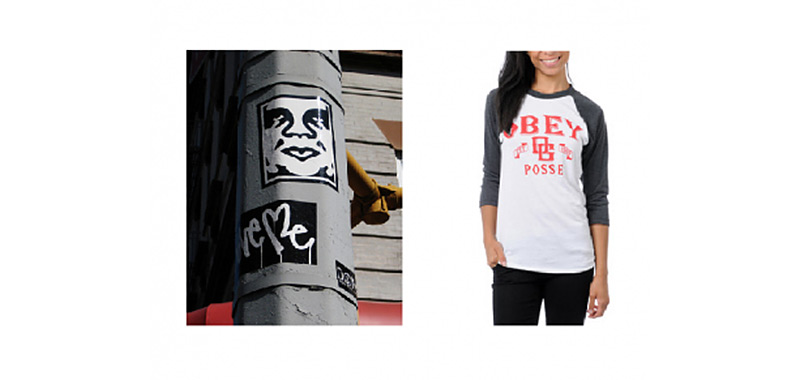
Kid bumps man with cart

Reddit users asked for a rewrite of the ending for their sake and were rewarded with a melee of multiple responses, many of which include kidnapping and murder of a child. These trolls feel not only a sense of duty and justice in flexing their muscles to create these sometimes chilling scenarios, but have no regard for the emotional well-being of others who may have stumbled across the page, unwittingly searching for a few laughs.
Baphomet statue

An example that comes very close to trolling, but ends up being satire (done to make a point) is the example of Satanists attempting to have a statue of Baphomet put in front of the Oklahoma State Capitol. As a anti-religious group, having tax dollars go to the maintenance and showcasing of a massive sculpture is completely absurd, and when the 10 commandments statue that they opposed was destroyed, they pulled back their desire for the statue’s placement, lest they be accused of hypocrisy. While it comes very close, it ceases to be trolling because it manages to create social capital for one group of Satanists, which could then be spun into gold as it were.
Trolls, unlike Rumpelstiltskin, work for pure spite and are always on the precipice of a slippery slope — they have no such interest in material gains, only in producing hatred and despair in others.
Other examples of not-trolling include the phenomenon of the agent provocateur. The U.S. COINTELPRO program used agent provocateur tactics to incriminate and sow unrest in largely left radical political groups such as the Black Panther Party, Student Nonviolent Coordinating Committee, the American Indian Movement, and SCLC. During the 2004 Republican National Convention in New York City, and in Occupy Oakland, Occupy LA and Occupy Wall Street, and elsewhere, police were accused of using agent provocateurs to get a rise out of people and encourage criminal activities similar to entrapment.

Examples in the art world abound:
Andres Serrano : Piss Christ

William Pope.L, who chained himself to a Chase bank branch wearing sausages like dynamite.
Sherrie Levine: Shoe Sale
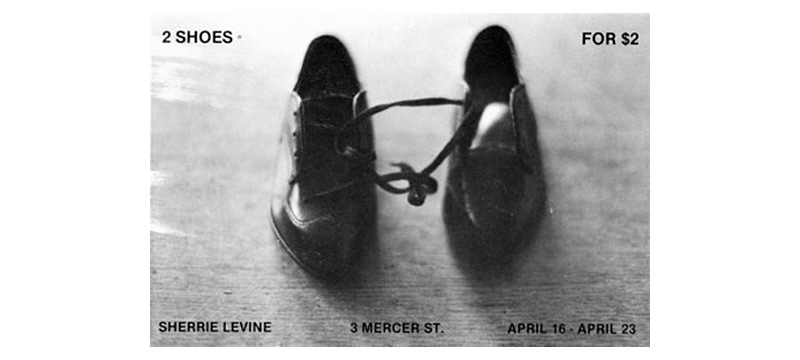
David Hammons's blizzard snowball sale a few years later

Left: Vija Celmins's giant comb. Right: Jill Magid's System Azure

John Currin vs. Norman Rockwell
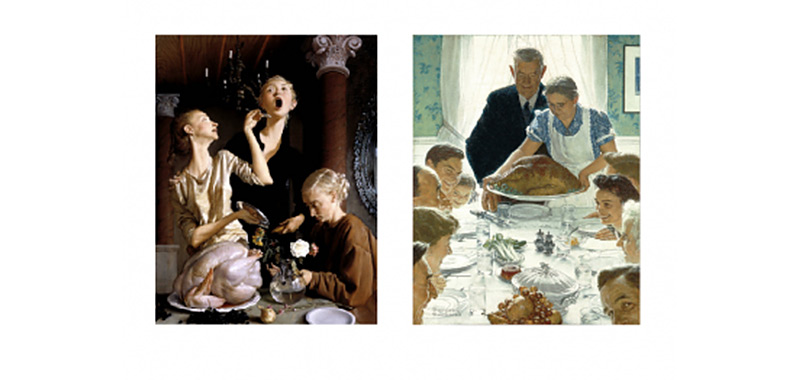
Duchamp's urinal, which bit off of Baroness Elsa Von Freytag's work

Guillermo Gómez-Peña and Coco Fusco as the couple in the cage

Claes Oldenburg's knees
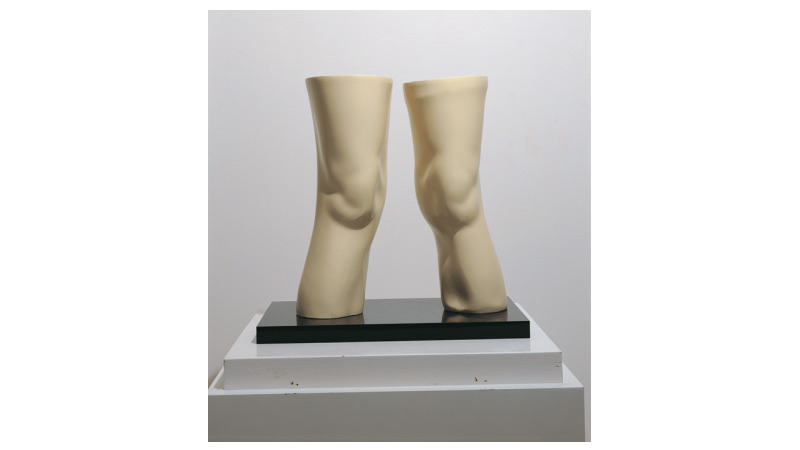
Elaine Sturtevant
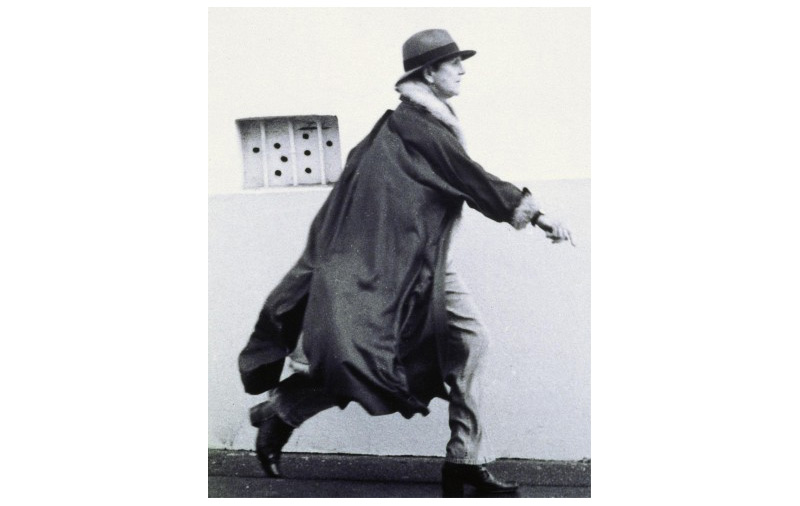
Brad Troemel's ant farms

Daniel Bozhkov's crop circles for Larry King
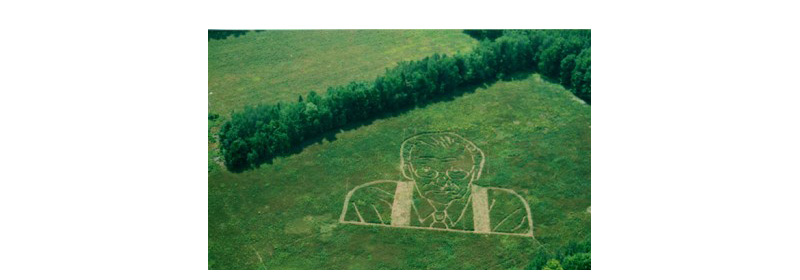
The Yes Men's entire oeuvre
But since artists at the very least represent themselves and have a desire to continue their name and careers, these have to be seen as strategic but not sadistic or psychopathic gestures. Chris Burden's TV spots seem akin to trolling as they both make someone's life harder (the programmer) and don't accumulate social capital for Burden, at least not initially, as his name is not present in the ads.
In his "Poem for LA" he orates:
Science has failed, heat is life, time kills
Science has failed, heat is life, time kills
Science has failed, heat is life, time kills
The entire project was done under the false nonprofit called CARP, which precedes strategies later taken up by Walid Raad, the Bruce High Quality Foundation and others.
Another work, “Chris Burden Promo," would be disqualified because it includes self-promotion (despite the fact that he convinced several station managers that his name was the name of a company not an individual). In that work, he repeats a list:
Leonardo Da Vinci
Michelangelo
Pablo Picasso
Rembrandt
Chris Burden
To return to Richard Prince, could we consider his "new portraits" trolling? His use of the Instagram vessel for the photos in addition to the cryptic or thinly veiled lascivious comments bring it into “fair use.” So cruel and calculated? Yes. Understanding of the spirit of trolling? No.
And there’s a bunch of folks I don’t want to merit by mentioning.
Examples of true trolls, ones with violence but not a sociopathic kind:
Lee Lozano's 1971 conceptual masterwork, Decide to Boycott Women, which came after a series of works in which she would have dialogues with various individuals in her studio, was documented in her notebook via negations like, "THROW LUCY LIPPARD’S 2ND LETTER ON DEFUNCT PILE, UNANSWERED…DO NOT GREET ROCHELLE BASS IN STORE." The antisocial component links it to trolling, and the violence toward women, whether symbolic or not, such as "if confronted with a female clerk in a market she would insist upon being served by a man," also functions as a forerunner to the kind of violence that would later be played out in the mental playground of outcasts and reachers.
Adrian Piper: quitting art to focus on Kantian Philosophical research?
No ... no.

I use art as the most extreme example, but there’s similar come-closes in academia:
Zizek…with bell hooks borrowing some tactics, as well as Cornel West and Richard Dawkins.
And in music/comedy:
Reggie Watts (fake accent and ersatz rapping)
Andy Kaufman (various)
Sasha Baron Cohen (various)
Lil B (I’m Gay, the Basedgod’s curse, baile funk songs with his cat Keke)
Riff Raff (hypercolor blackface and honorific parody of Houston Underground Rap scene)
Cam’ron- Curtis
50 Cent- Curly and other online characters
And certainly in the political arena with punditry: Gavin McInnes, Ann Coulter, Stacy Dash, Bill O’Reilly and Cam’ron a case of troll vs. troll.
If you lose your cool, you lose the game.
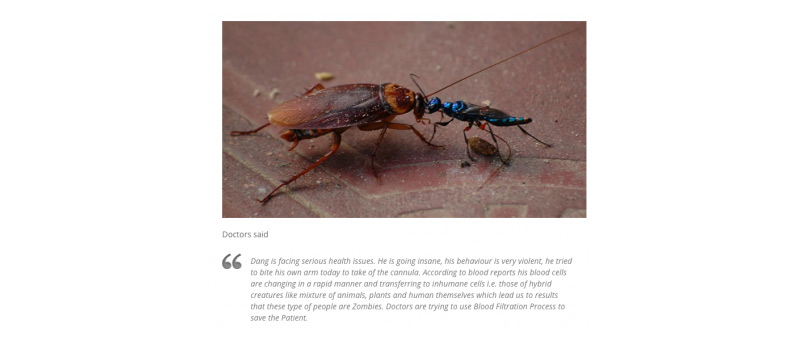
What does it mean that we want to make this activity which is so close to sadism and sociopathy into a catch-all for any slightly irritating, or attention-garnering gesture? Anonymity online is long gone, so shouldn’t our behavior change too?
Sometimes I feel
Like I don't have a partner
Sometimes I feel
Like my only friend
Is the city I live in
The city of angels
Lonely as I am
Together we cry
[2x]
I don't ever want to feel
Like I did that day
Take me to the place I love
Take me all the way
I don't ever want to feel
Like I did that day
Take me to the place I love
Take me all the way
Under the bridge downtown
Is where I drew some blood
Under the bridge downtown
I could not get enough
Under the bridge downtown
Forgot about my love
Under the bridge downtown
I gave my life awayyyyy
